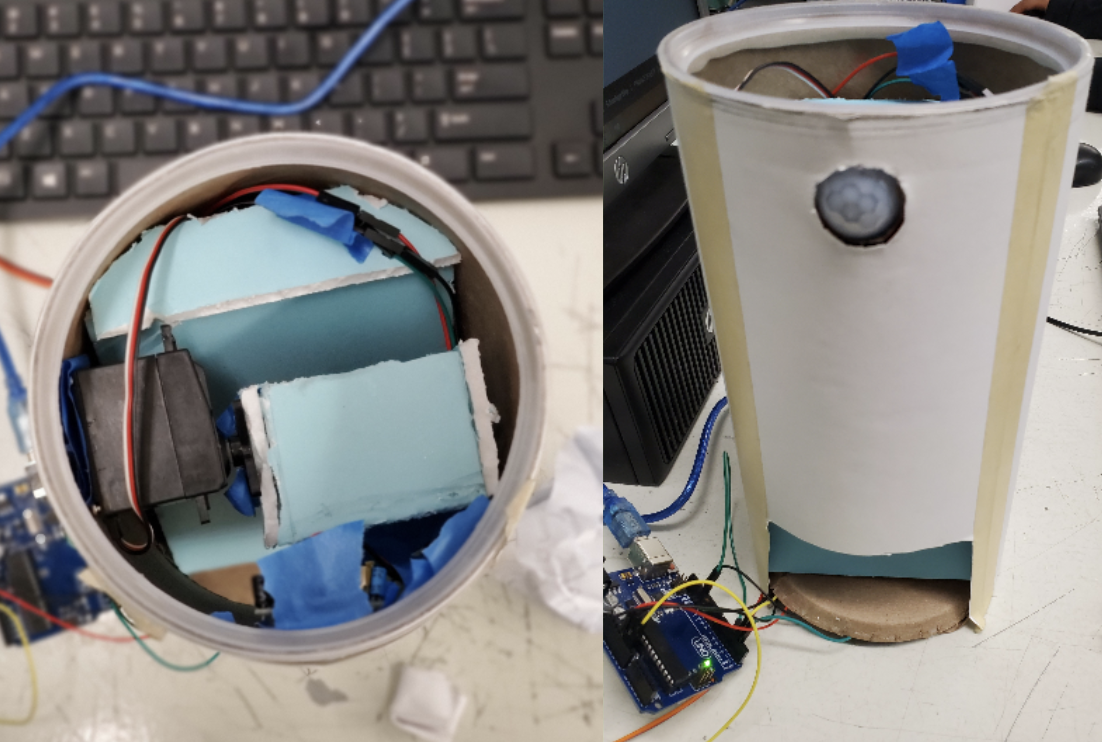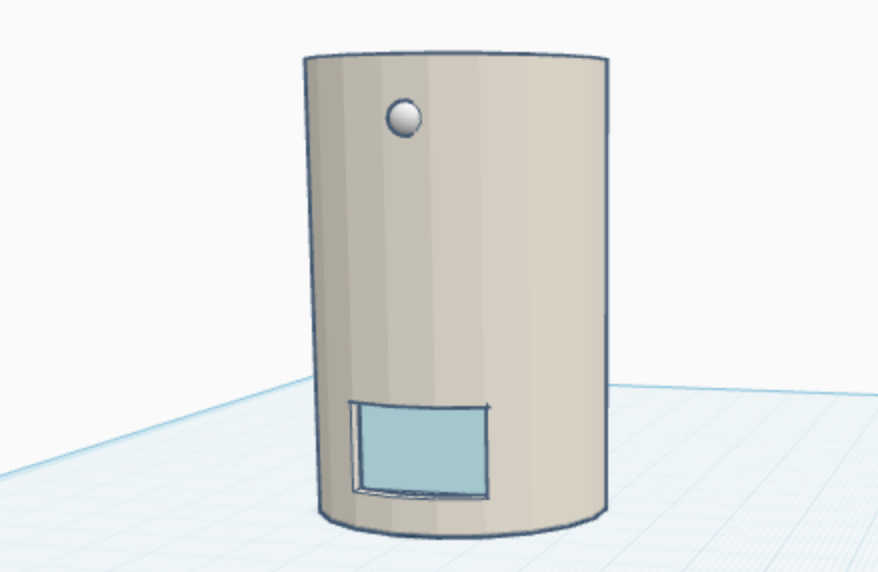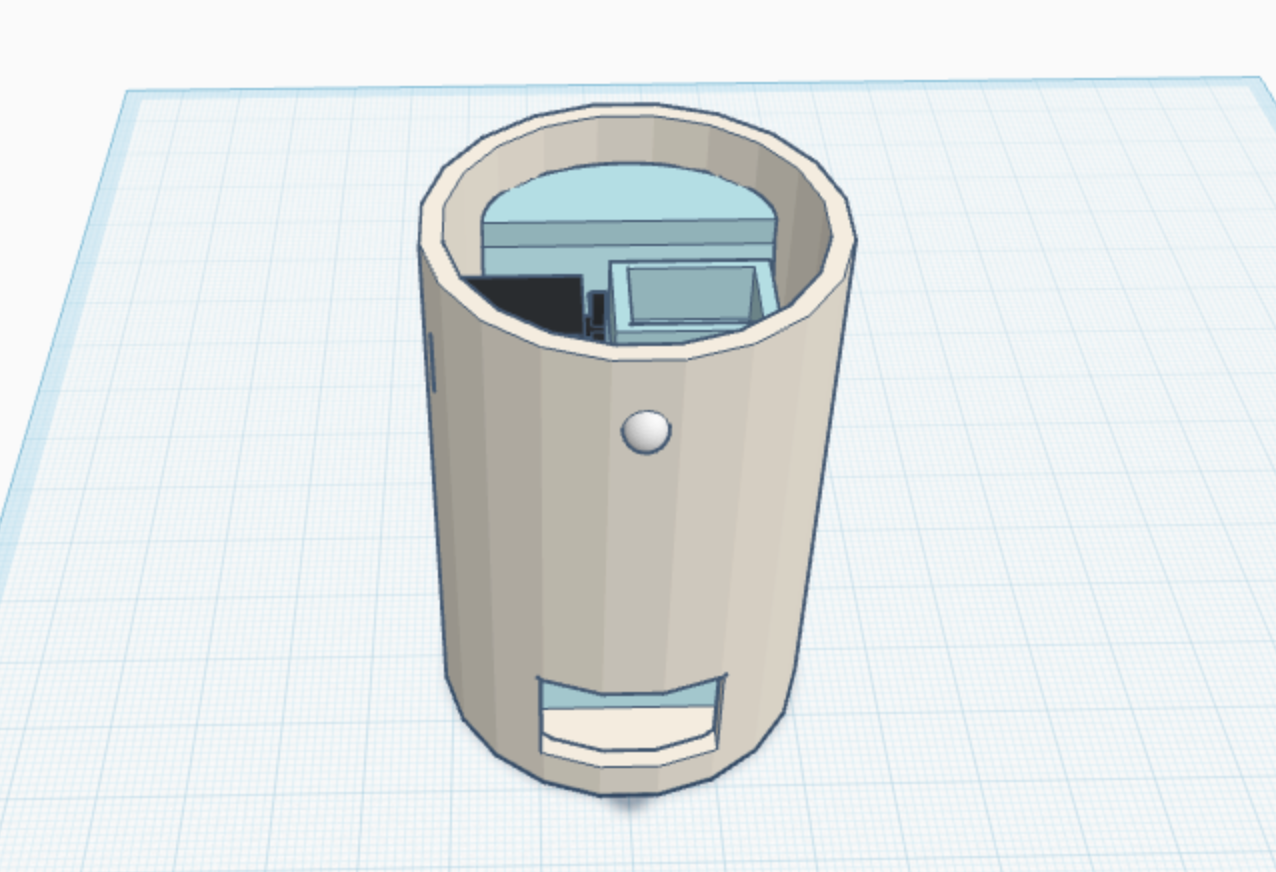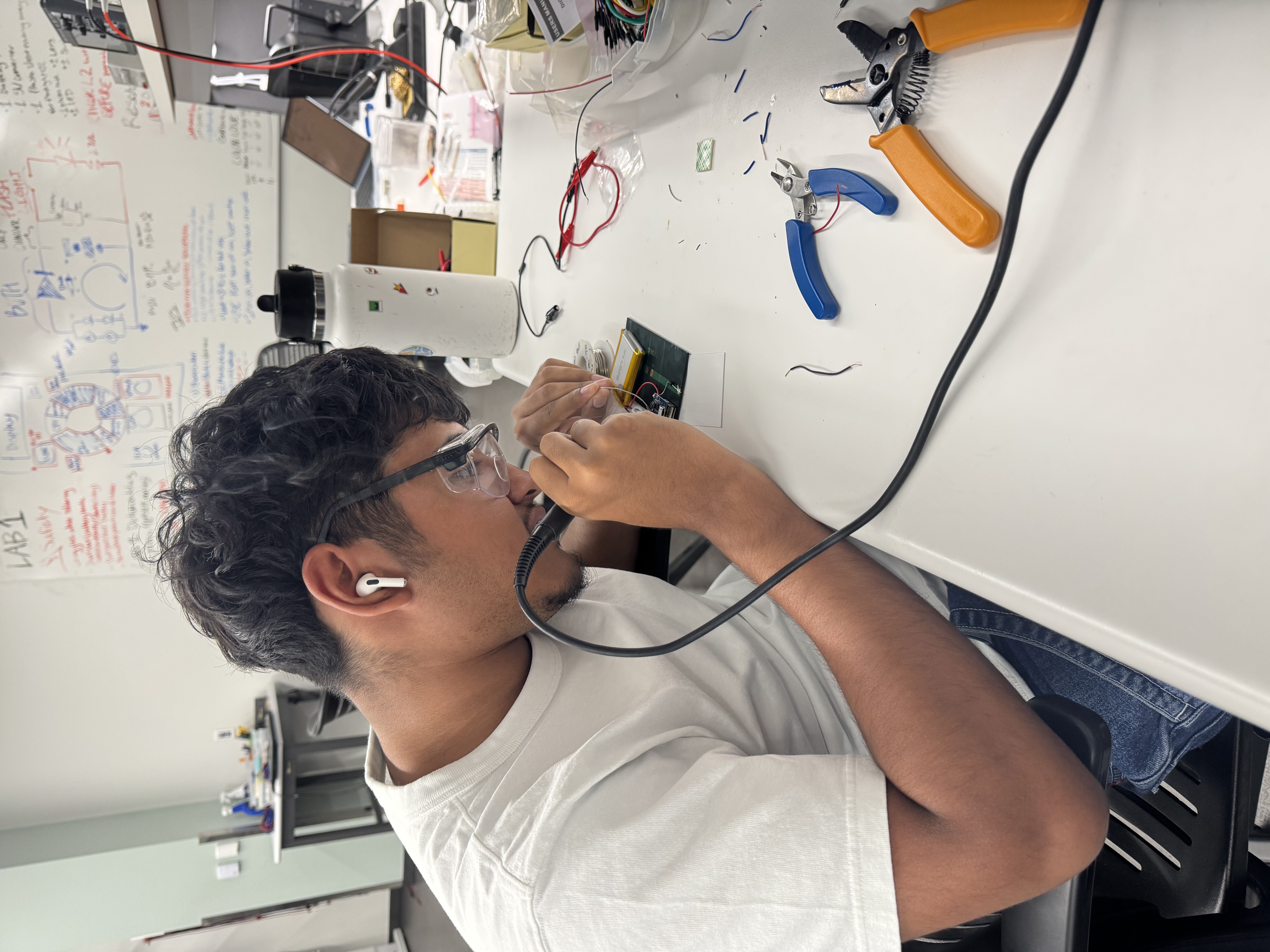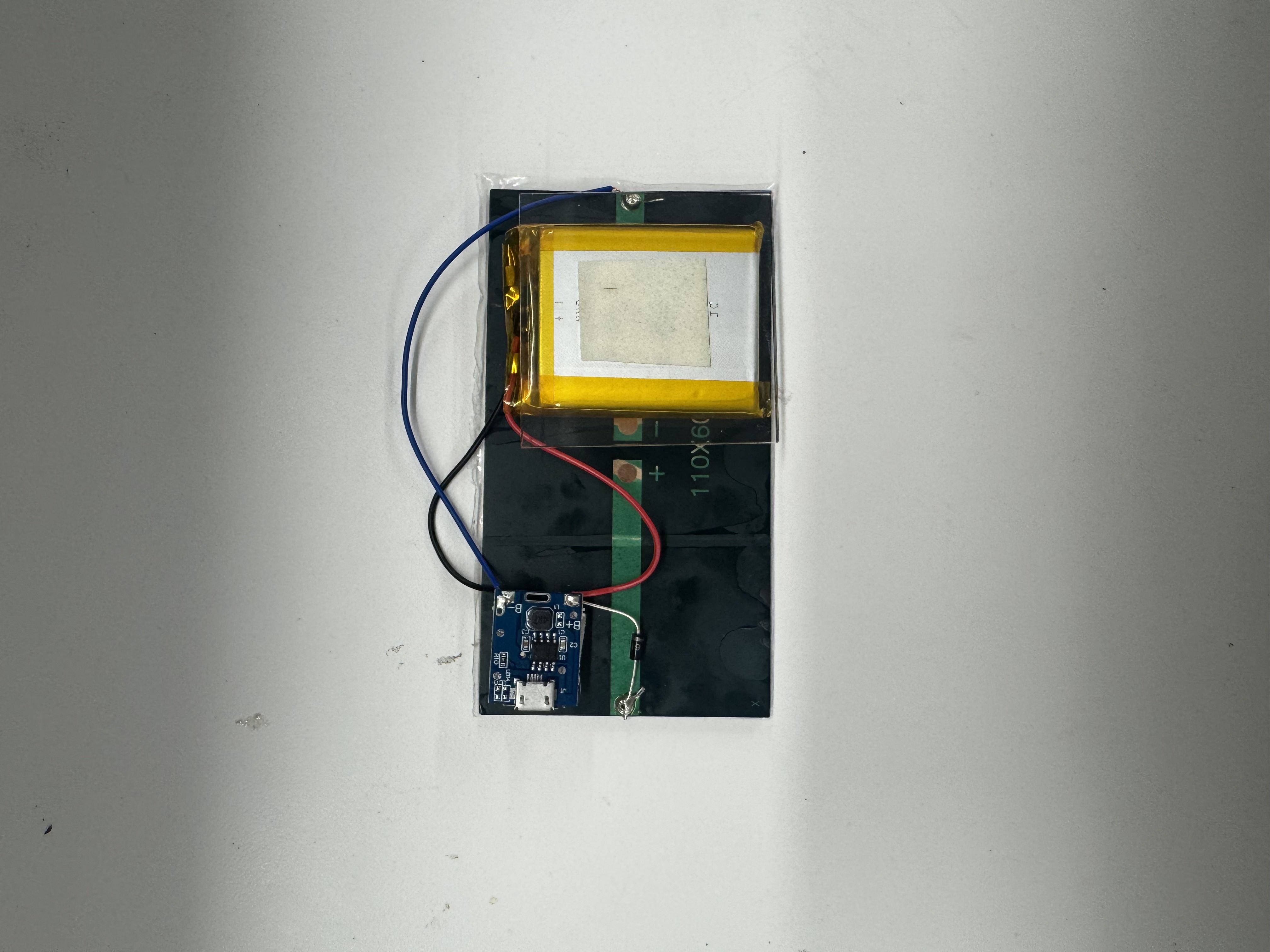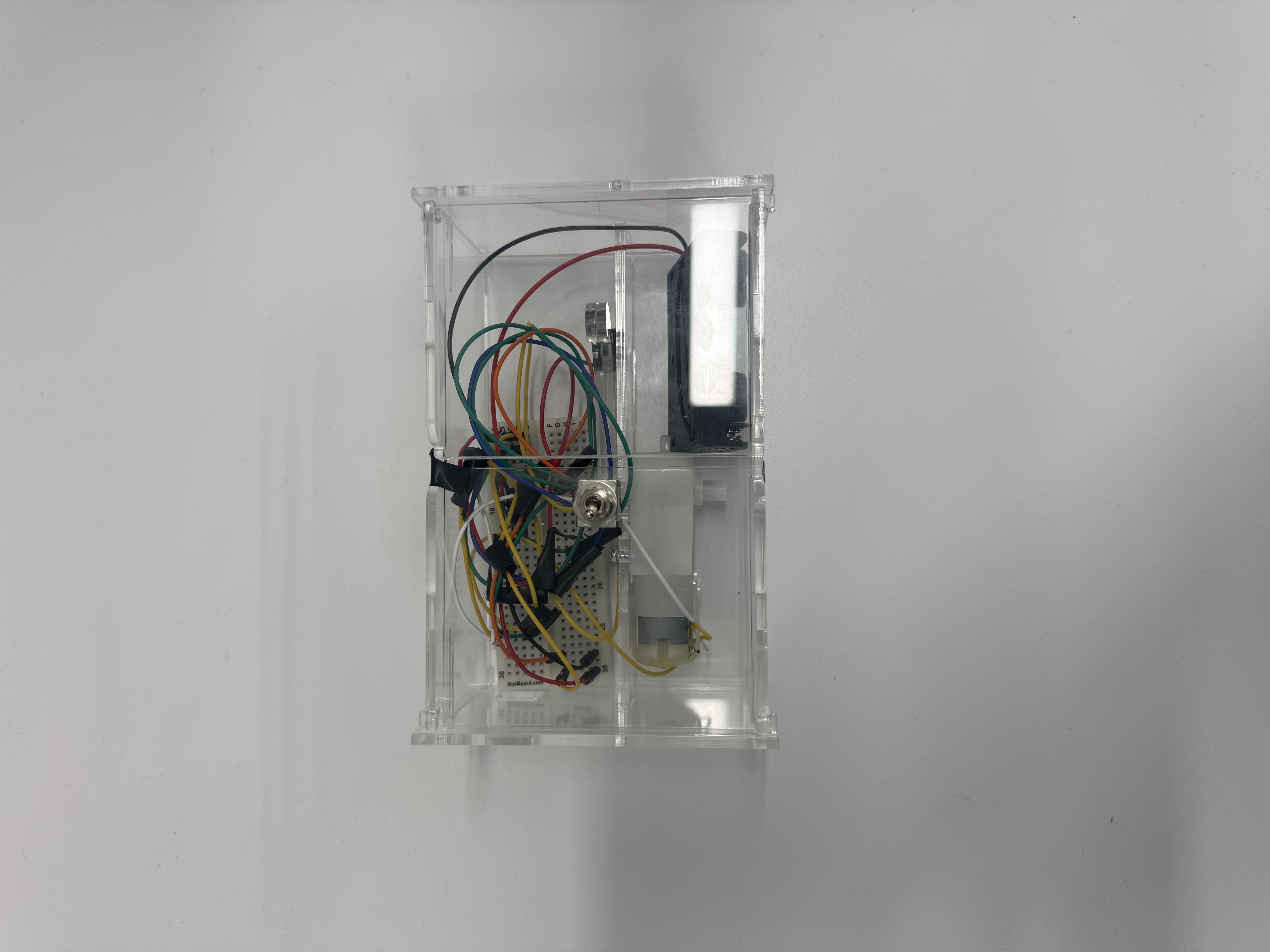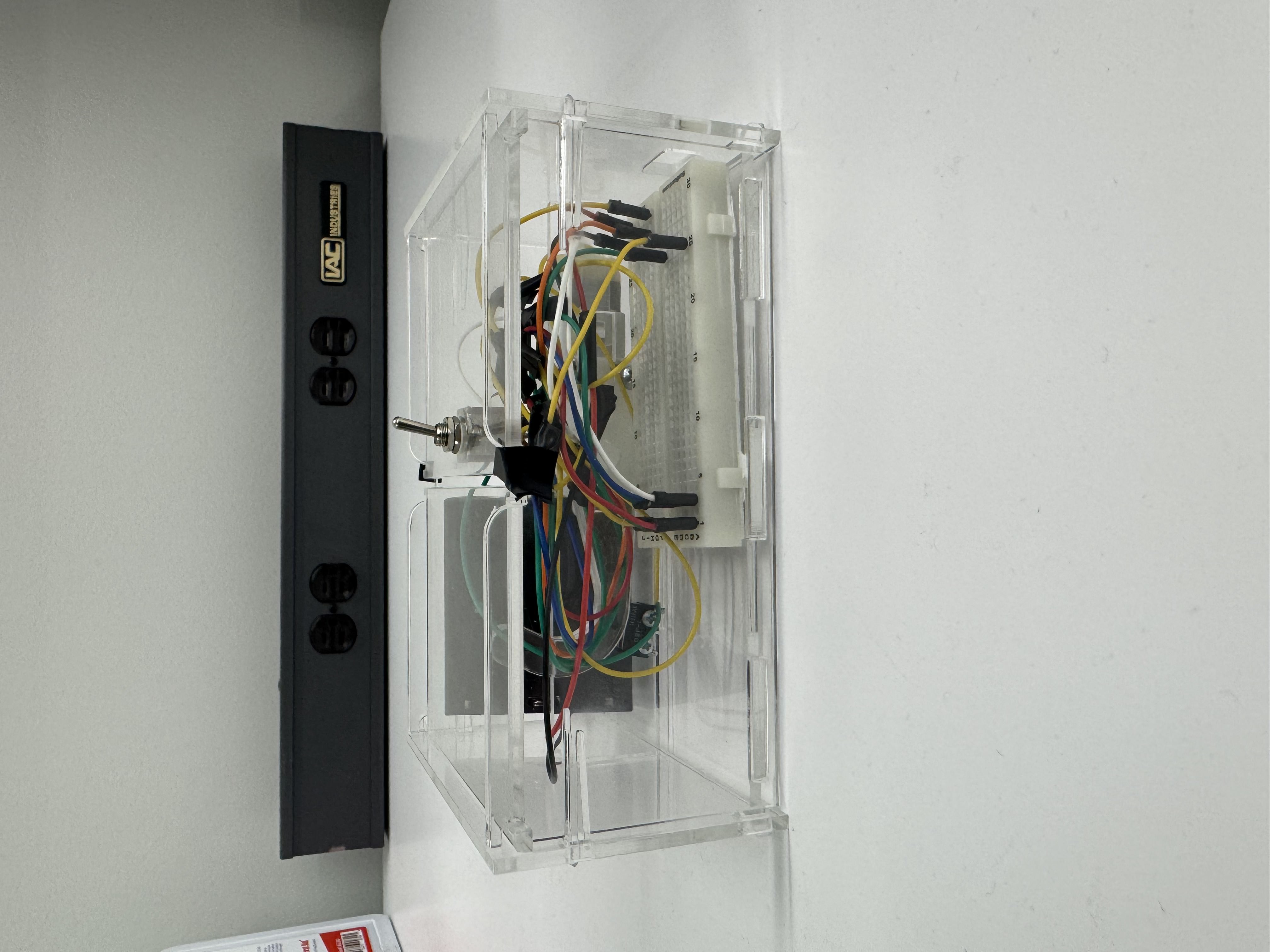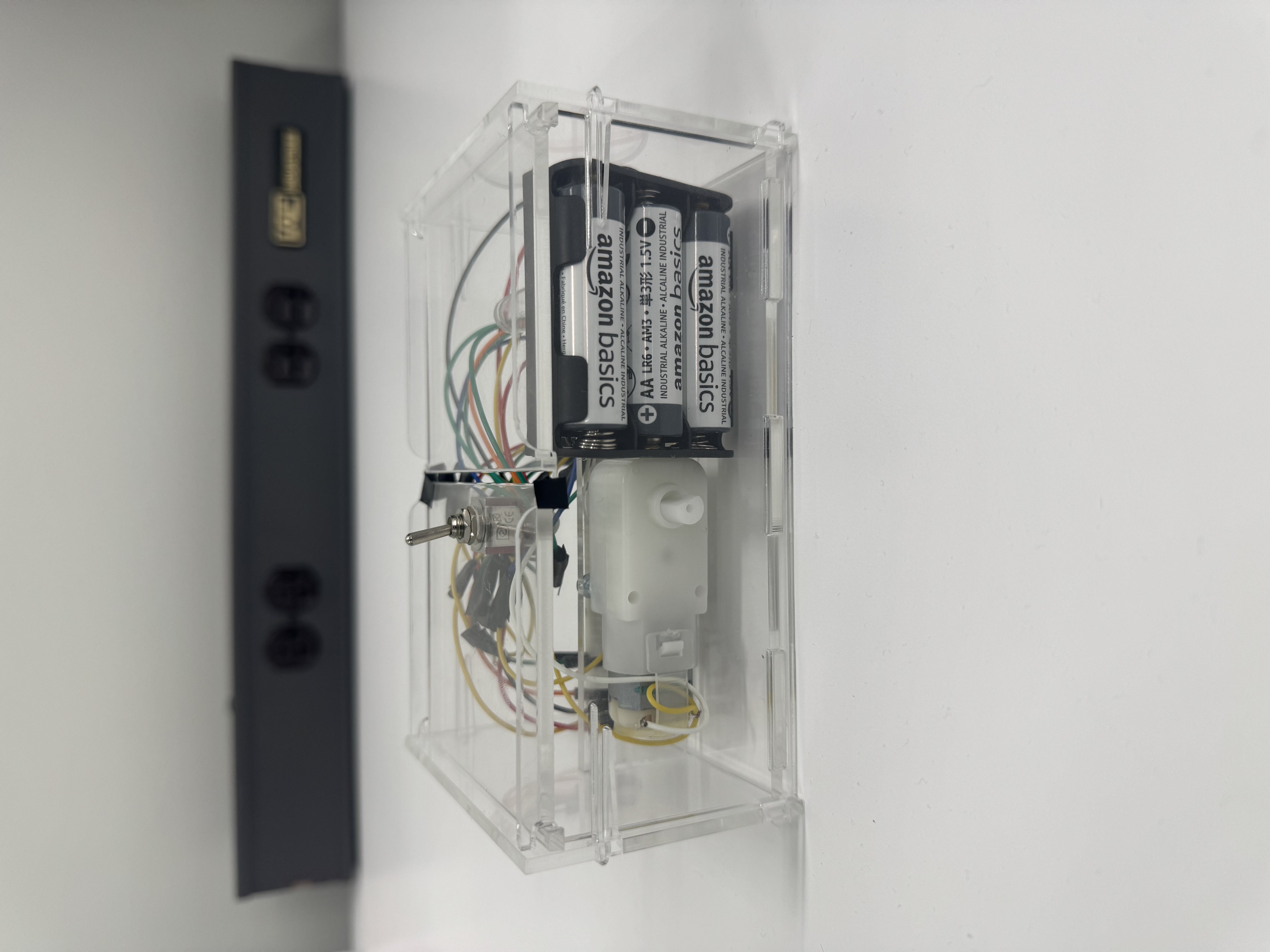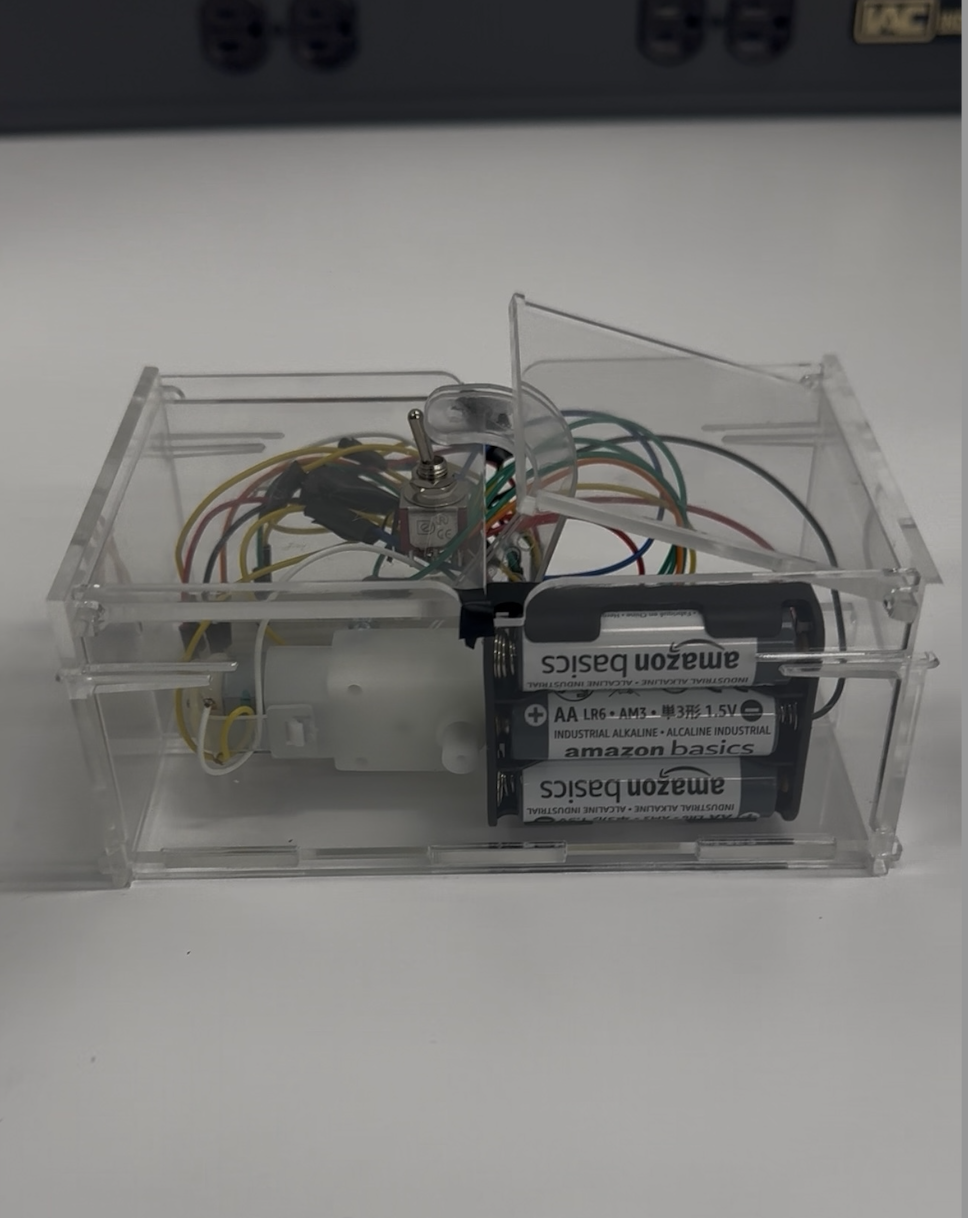Automatic Feeder Prototype
This project features an Arduino Uno board along with various electronic components to power the feeder system. It uses a motion sensor to detect an animal’s presence and activates a motor that releases food. This ensures that hungry animals can easily access nourishment when needed. By providing a reliable food source, the feeder aims to reduce the risk of species decline and support the balance of ecosystems.
Solar-Powered Charger
In this project, I designed and built a solar-powered USB charger capable of charging small electronic devices such as cellphones, iPods, and tablets. The system uses a solar panel to capture sunlight and convert it into electrical energy, which is then stored in a rechargeable lithium-polymer (LiPo) battery. Because USB devices require a constant 5 V output and the LiPo battery provides only about 3.7 V, the project also integrates a DC–DC voltage converter to step up the voltage to the required 5 V.
Useless Box
This project involved designing and building a motorized “useless box,” a playful gadget that turns itself off whenever switched on. When the user flips the external toggle switch to the on position, a mechanical “finger” driven by a DC motor emerges from the box, flips the switch back off, and then retracts inside—resetting the system for another cycle.
To power the circuit, I used three AA batteries in series to provide 4.5 V to the motor and control components. The system’s motion relied on reversing the motor’s polarity to extend and retract the finger, using a double-pole-double-throw (DPDT) switch for directional control. A single-pole-double-throw (SPDT) microswitch was installed to detect when the finger was fully retracted and stop the motor accordingly.
